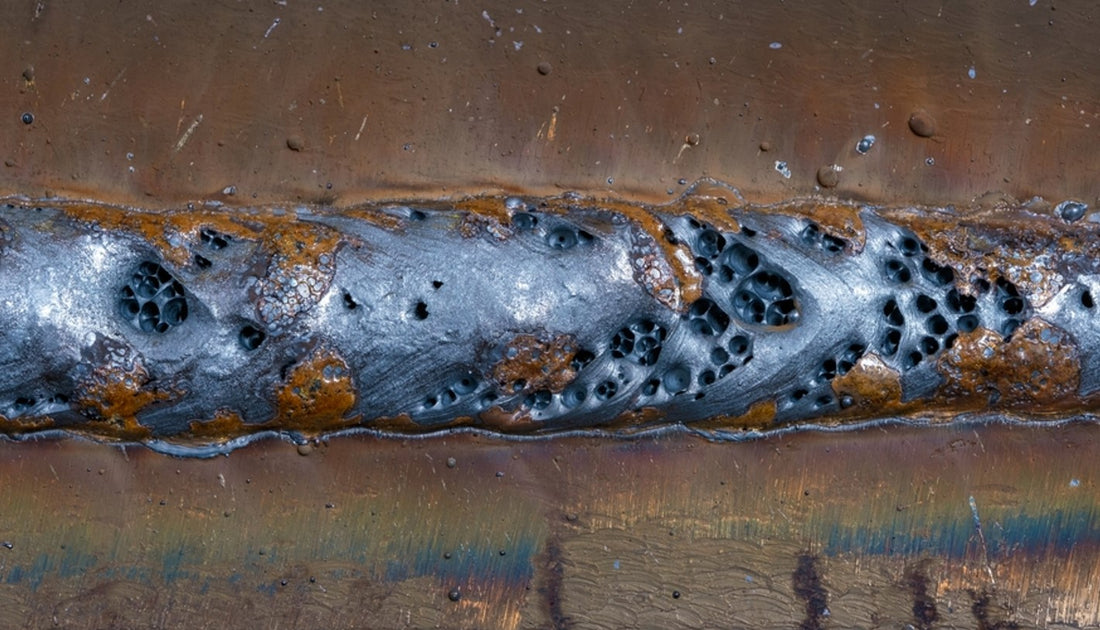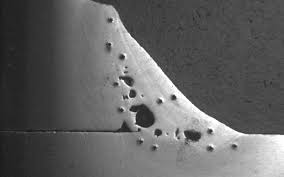Understanding Porosity in Welding: Exploring Reasons, Impacts, and Prevention Techniques
Porosity in welding is a persistent difficulty that can dramatically impact the quality and integrity of welds. As experts in the welding market are well mindful, understanding the reasons, results, and prevention methods connected to porosity is crucial for achieving robust and reliable welds. By diving right into the origin triggers of porosity, examining its detrimental results on weld high quality, and exploring effective prevention strategies, welders can enhance their knowledge and abilities to produce top notch welds continually. The intricate interaction of factors adding to porosity calls for an extensive understanding and an aggressive method to make certain effective welding results.
Typical Sources Of Porosity
Contamination, in the form of dirt, oil, or rust on the welding surface area, creates gas pockets when warmed, leading to porosity in the weld. Improper securing occurs when the shielding gas, commonly made use of in processes like MIG and TIG welding, is incapable to totally safeguard the molten weld swimming pool from reacting with the bordering air, resulting in gas entrapment and succeeding porosity. Furthermore, insufficient gas coverage, usually due to inaccurate circulation prices or nozzle positioning, can leave components of the weld unguarded, allowing porosity to develop.
Results on Weld Top Quality
The existence of porosity in a weld can dramatically compromise the overall high quality and integrity of the welded joint. Porosity within a weld creates voids or cavities that weaken the framework, making it much more at risk to breaking, rust, and mechanical failing.
Furthermore, porosity can hinder the performance of non-destructive testing (NDT) methods, making it testing to detect other flaws or gaps within the weld. This can result in significant safety concerns, particularly in critical applications where the architectural honesty of the bonded components is paramount.

Prevention Techniques Summary
Provided the damaging impact of porosity on weld top quality, reliable prevention strategies are critical to maintaining the structural integrity of bonded joints. One of the main avoidance techniques is comprehensive cleaning of the base products prior to welding. Pollutants such as oil, grease, corrosion, and moisture can add to porosity, so guaranteeing a clean work surface is crucial. Correct storage of welding consumables in dry conditions is likewise important to avoid moisture absorption, which can bring about gas entrapment throughout welding. Furthermore, selecting the suitable welding criteria, such as voltage, existing, and take a trip speed, can assist reduce the danger of porosity development. Making sure sufficient shielding gas circulation and coverage is another critical prevention method, as insufficient gas insurance coverage can lead to atmospheric contamination and porosity. Finally, appropriate welder training and qualification are vital for executing preventative steps efficiently and continually. By integrating these prevention strategies right into welding techniques, the incident of porosity can be dramatically reduced, resulting in more powerful and extra trustworthy bonded joints.
Value of Proper Shielding
Correct protecting in welding plays a vital role in stopping atmospheric contamination and making sure the integrity of bonded joints. Shielding gases, such as argon, helium, or a blend of both, are commonly utilized look at here now to protect the weld pool from responding with elements in the air like oxygen and nitrogen. When these responsive elements enter into call with the hot weld swimming pool, they can create porosity, causing weak welds with reduced mechanical buildings.

Insufficient protecting can lead to different flaws like porosity, spatter, and oxidation, jeopardizing the structural stability of the welded joint. For that reason, adhering to proper securing techniques is vital to generate high-grade welds with marginal flaws and make sure the durability and reliability of the welded parts (What is Porosity).
Monitoring and Control Approaches
Exactly how can welders effectively check and manage the welding process to make certain ideal outcomes and stop defects like porosity? One trick technique is through making use of innovative surveillance modern technologies. These can consist of real-time tracking systems that give responses on specifications such as voltage, current, take a trip speed, and gas flow rates. By continually checking these variables, welders can recognize deviations from the excellent conditions and make prompt adjustments to protect against porosity formation.

In addition, executing appropriate training programs for welders is crucial for monitoring and controlling the welding process successfully. What is Porosity. Enlightening welders on the relevance of maintaining consistent parameters, such as proper gas shielding and travel speed, can assist stop porosity problems. Routine evaluations and qualifications can additionally make certain that welders excel in monitoring and controlling welding processes
Furthermore, making have a peek here use of automated welding systems can enhance monitoring and control capacities. These systems can specifically manage welding specifications, minimizing the probability of human error and guaranteeing consistent weld quality. By incorporating innovative tracking technologies, training programs, and automated systems, welders can effectively check and regulate the welding process to minimize porosity issues and attain high-quality welds.
Conclusion
